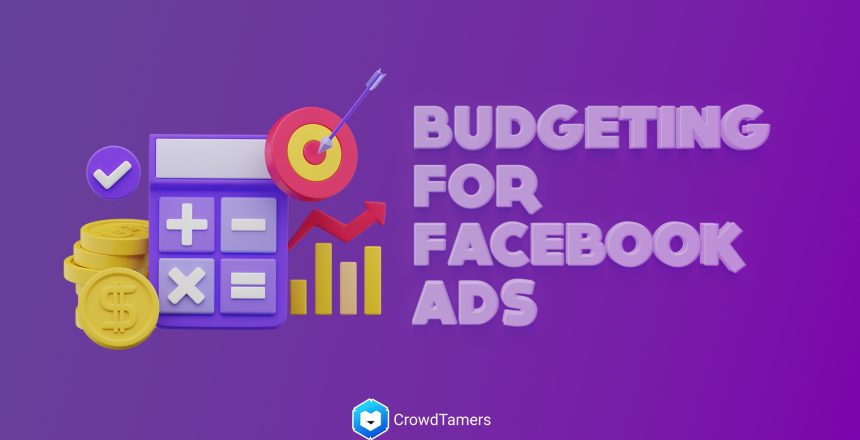As a startup, it’s crucial to approach Facebook Advertising with a well-planned budget to ensure you’re getting the most out of your marketing spend.
Budgeting for Facebook Ads as a startup requires careful planning and ongoing optimization.
With the right budgeting strategy and a commitment to ongoing optimization, Facebook Ads can be a great tool for growing your startup and achieving your marketing goals.
In this blog post, we’ll walk you through the process of budgeting for Facebook Ads, providing tips and best practices to help you maximize your return on investment (ROI).
Understanding Facebook Ad Costs
Before diving into budgeting, it’s important to understand the factors that influence Facebook Ad costs. Facebook Ads operate on an auction system, where advertisers bid against each other for ad placements. The cost of your ads will depend on several factors, including:
- Target audience: The more competitive your target audience, the higher your ad costs will likely be.
- Ad objective: Different ad objectives (e.g., brand awareness, conversions, etc.) have different average costs.
- Ad placement: The placement of your ads (e.g., Facebook News Feed, Instagram Stories, etc.) can impact your costs.
- Ad quality: Higher-quality ads (i.e., ads with higher engagement and relevance) tend to have lower costs.
On average, Facebook Ads cost around $0.97 per click and $7.19 per 1000 impressions, according to a study by WordStream. However, these costs can vary widely depending on your industry, target audience, and ad strategy.
Setting Your Facebook Ad Budget
When setting your Facebook Ad budget, it’s essential to consider your overall marketing goals and the role Facebook Ads will play in achieving those goals. Here are some steps to help you determine your budget:
- Define your marketing objectives: Clearly define what you want to achieve with your Facebook Ads, whether it’s driving website traffic, generating leads, or increasing sales.
- Determine your target audience: Identify who you want to reach with your ads and how much it may cost to reach them based on factors like demographics, interests, and behaviors.
- Consider your overall marketing budget: Look at your total marketing budget and determine how much you can allocate to Facebook Ads while still leaving room for other marketing channels.
- Start small and test: If you’re new to Facebook Ads, start with a small daily budget (e.g., $5-$10) and test different ad strategies to see what works best for your business.
- Monitor and adjust: Continuously monitor your ad performance and adjust your budget as needed based on results. If an ad is performing well, consider increasing your budget to scale your success.
Choosing the Right Bidding Strategy
Facebook offers several bidding strategies to help you optimize your ad spend based on your marketing goals. The three main options are:
- Lowest cost: Facebook will aim to get you the most results (e.g., clicks, conversions) at the lowest possible cost. This is a good option if you’re focused on maximizing results within your budget.
- Lowest cost with bid cap: Similar to lowest cost, but you set a maximum bid to control costs. This can help prevent overspending if ad costs start to rise.
- Target cost: You set a target cost per result (e.g., cost per click), and Facebook will aim to maintain that cost. This can provide more stable costs but may limit your results.
The right bidding strategy will depend on your specific goals and risk tolerance. As a startup, it may be best to start with the lowest cost option to maximize results and then experiment with other strategies as you gain more experience.
Allocating Your Budget Across Ad Sets
Once you’ve determined your overall Facebook Ad budget, you’ll need to decide how to allocate that budget across different ad sets. An ad set is a group of ads that share the same target audience, budget, and schedule.
Here are some tips for allocating your budget across ad sets:
- Prioritize high-performing ad sets: If you have ad sets that are generating strong results, consider allocating more budget to those ad sets to scale your success.
- Test different target audiences: Create separate ad sets for different target audiences to see which ones perform best. Allocate more budget to the audiences that generate the highest ROI.
- Experiment with different ad formats: Try different ad formats (e.g., video ads, carousel ads) to see which ones resonate best with your audience. Allocate budget to the formats that drive the best results.
- Consider the customer journey: Allocate budget across ad sets that target people at different stages of the customer journey, from awareness to consideration to conversion.
Example of a Facebook Ad Budget for a Startup
Let’s say you’re a startup with a monthly Facebook Ad budget of $1,000. Here’s an example of how you might allocate that budget:
- Ad Set 1: Prospecting (awareness) – $400
- Objective: Video views
- Target audience: Lookalike audience based on website visitors
- Ad Set 2: Retargeting (consideration) – $400
- Objective: Website clicks
- Target audience: People who have viewed your website in the past 30 days
- Ad Set 3: Conversion (purchase) – $200
- Objective: Conversions
- Target audience: People who have added items to their cart but haven’t purchased
This allocation allows you to reach people at different stages of the customer journey while also leaving room for testing and optimization.



